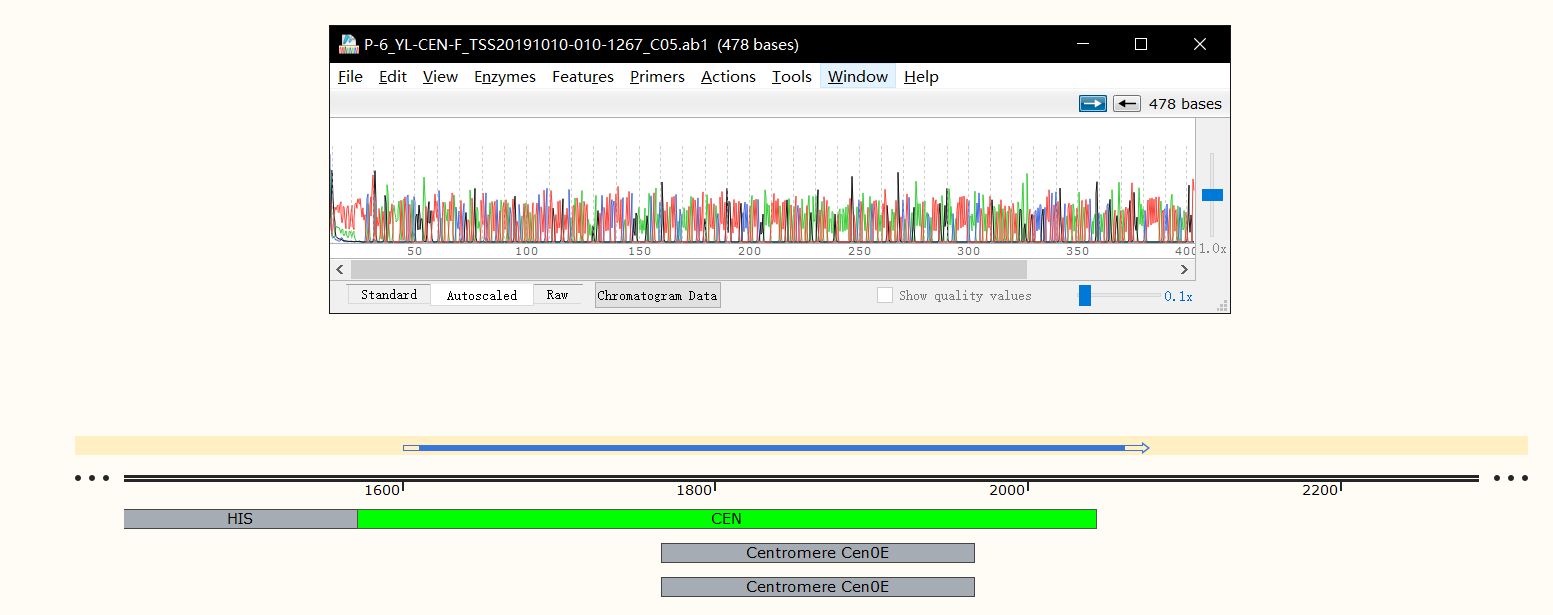Part:BBa_K3112042
Chromosomal stabilization element group example 1
Our chromosome stabilizing elements consist of two parts: centromeres and tag for screening.
In this example, we try to directly replace the centromere of Saccharomyces cerevisiae.
Before chromosome transferring, we hoped the element group will not have a great impact on the growth and division of cells. It can stabilize this chromosome with stable elements when the other organism of the fusion system is dominant.
In order to meet the relevant iGEM standards for part, we deleted the homologous arms of Saccharomyces cerevisiae on both sides of the part. That doesn't mean we did the same in the experiment. The significance of creating this example is that we hope that later teams can add the stable element of chromosome that can affect cell growth to any position through PCR or other means.
Sequence and Features
- 10COMPATIBLE WITH RFC[10]
- 12INCOMPATIBLE WITH RFC[12]Illegal NheI site found at 906
- 21INCOMPATIBLE WITH RFC[21]Illegal BglII site found at 797
Illegal BglII site found at 857 - 23COMPATIBLE WITH RFC[23]
- 25COMPATIBLE WITH RFC[25]
- 1000COMPATIBLE WITH RFC[1000]
After obtaining the results of the above two experiments and conducting relevant analysis, we have new ideas. Comparing the Saccharomyces cerevisiae with the centromeres of the Yarrowia lipolytica, we can see that there is not much difference between them overall. They both have point centromere, and the two yeasts are closely related, and there is no clear evidence that Saccharomyces cerevisiae cannot recognize the centromere of the Yarrowia lipolytica. So after replacement, we will be able to obtain a Saccharomyces cerevisiae that uses the Yarrowia lipolytica centromere to direct chromosome-dissociation-related behavior.
From the growth status of Saccharomyces cerevisiae, the morphology and growth of the transformants and the manner of division did not change much, and the metabolic pathway capable of producing lycopene on this chromosome could still be expressed normally. It shows that the whole cell can still grow normally after replacing the centromere.
This shows that the centromere fragment we integrated into Saccharomyces cerevisiae is correct.
We also compared the lycopene production (by comparing the color) of yeast inserted with centromere, yeast replaced with centromere and original Saccharomyces cerevisiae. It was apparent by visual observation that the yield of Saccharomyces cerevisiae with an additional heterologous centromere was significantly lower than the other two, and the Saccharomyces cerevisiae replacing the centromere was similar to the original yeast.
| None |






